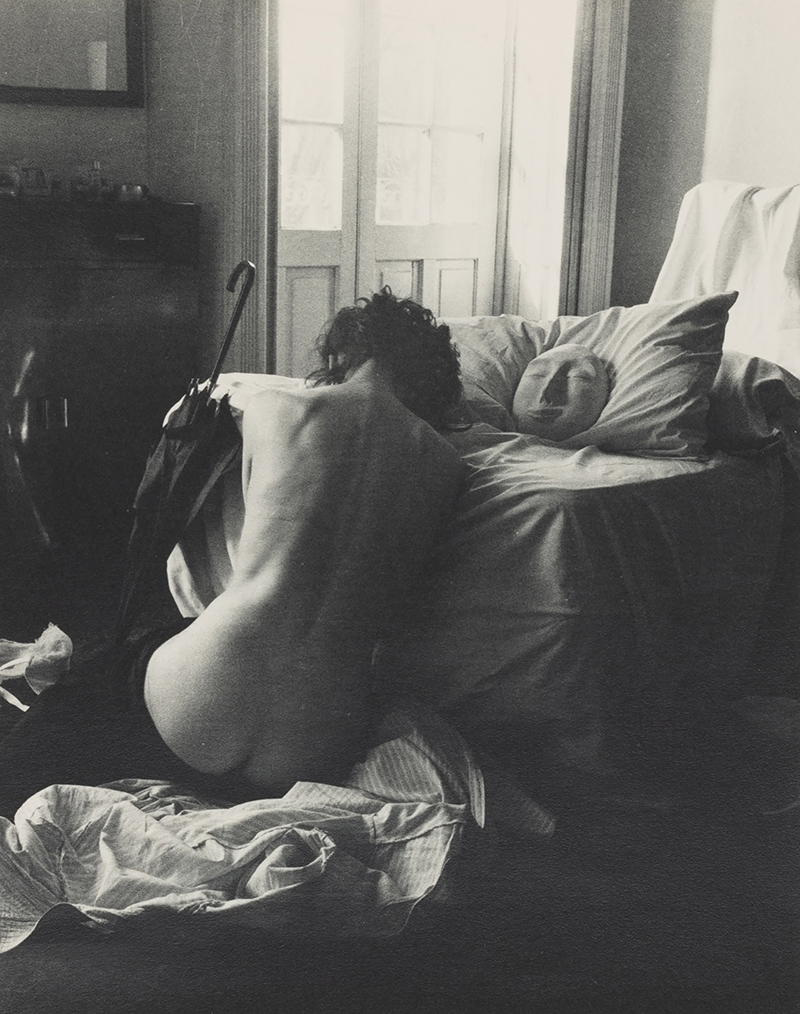Object of the Month: "Study for Oda a la Necrofilia," 1962, by Kati Horna
By Bowdoin College Museum of Art
Study from “Oda a la Necrofilia” (with Leonora Carrington), 1962, gelatin silver print, by Kati Horna, Hungarian-Mexican, 1912–2000. Museum Purchase, Lloyd O. and Marjorie Strong Coulter Fund, Bowdoin College Museum of Art.
This vintage gelatin silver photograph is part of Kati Horna’s series, Oda a la Necrofilia (1962). It captures Leonora Carrington, a good friend of Horna’s and an established artist herself, posed next to a death mask and a closed umbrella. Horna was a prominent Surrealist photographer with roots in photojournalism. She first became known for documenting the civilian experience during the Spanish Civil War. Beginning when she was a young Jewish woman living in war-stricken Hungary in the early 1900s, Horna was repeatedly displaced from homes. These relocations continued throughout her life. She sought refuge in Mexico during World War Two, where she surrounded herself with a community of Surrealist artists, notably Carrington and Remedios Varo.
In a room with an unmade bed and soft light coming from the windows, illuminating one side of Carrington’s back, Horni creates a strikingly domestic scene. The light seems to tug at the darker corners of the photograph, accentuating a tension between mystery and the known. Carrington’s face is turned away from the viewer, while the mask faces the viewer. The mask seems to replace the identity of the sitter—a face in place of Carrington’s own. Much remains unknown to the viewer: does this woman reflect a collective sense of grief that the world or a culture is experiencing? Is she grieving for a loved one? Is this her home?
While Horna found work as a photojournalist to support herself in Mexico she discovered her artistic voice within a community of Surrealist artists and friends. Carrington and Frida Kahlo played important roles in this artistic circle. Drawing from her own experience , she sought to reveal subconscious feelings or experiences and to explore the human psyche through the art of photography. This project grew out of Horna’s own sense of loss and grief, as well as responding to legacy of violence against and fetishization of women’s bodies.
This photograph is currently on view in Transformations: New Acquisitions of Global Contemporary Art.
Lily Weafer ’23Student Assistant to the Curator, Summer 2021